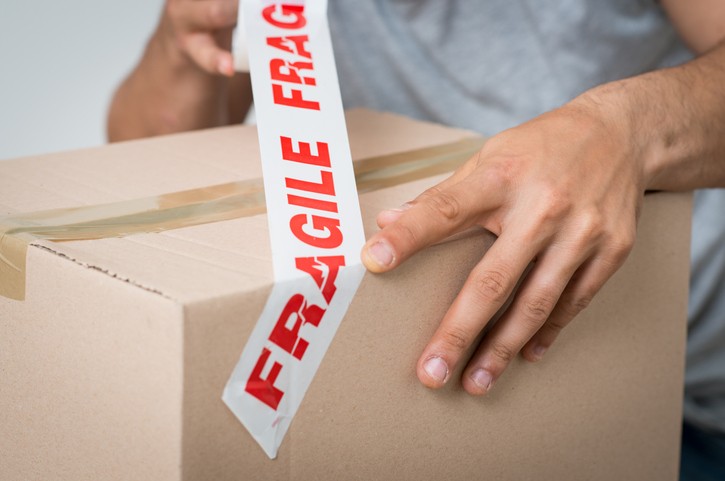What You Need to Know About Small Business Shipping
You’ve thought of everything for your small business. You’ve found suppliers and vendors, figured out all your price points and profit margins and set up your space. So why aren’t you seeing the profits you expected?
Plenty of small businesses overestimate the role shipping plays in their expenses and their time. Streamlining your shipping process and using the right services will go a long way toward a more efficient and lucrative business.
If you’re looking for ways to jumpstart or improve your small business shipping process, try these tips.
Small Business Shipping Tips
If you’re ready to stop paying more for shipping or spending more time than you need, here’s what you need to know.
Know the Three W’s
The three W’s are three of the factors that impact a package’s shipping cost the most.
What: Shipping certain materials require special care and, as a result, higher fees.
Weight: Your product’s weight is often the largest factor that affects its shipping cost.
Where: As you would expect, shipping farther distances tends to cost more.
As you’re estimating your shipping costs and getting quotes from carriers, the three W’s can help.
You’re Not Married to Your Carrier
Many small businesses choose one carrier, whether it’s FedEx, UPS, or USPS. They stick with them for years, using them for every shipment of every product. This is in spite of the fact that carriers like USPS tend to raise their rates each year.
While it might be a pain to shop around, there’s a good chance you’re overpaying if you haven’t done so in the past year or two.
Spread the Love
Along the same lines as shopping around for carriers, you should remember that different carriers may be better for different shipments. It’s a good idea to have relationships with several types of companies when you need them.
For instance, major carriers like FedEx and UPS could be great for interstate shipments. When it comes to local shipments, though, a local courier will probably be your best bet. That’s especially true for expedited shipments.
If you offer international shipping, that may also work best with a different carrier. The key is to have different go-to carriers for different situations.
Plan Your Packaging Well
Another factor that affects your shipping cost is the size and shape of each item.
Many carriers have tiered pricing for different sizes of packages. For instance, they could have one price per ounce for packages with at least one side over 12 inches. The next tier may be 18 inches, then 24 inches and so on.
With that type of pricing model, using a box that’s half an inch smaller could mean a sizable drop in your shipping costs.
If your carriers have size brackets like this, find out the cut-offs. It could be worth revising your packaging or the boxes you’re buying.
Free Shipping Isn’t a Slam-Dunk
Some retailers and e-commerce businesses think free shipping is a deal-breaker for customers. They assume all their competitors are offering it, so they must too in order to compete.
It’s not as much of a given as you might expect. First, take a closer look at your competitors. Is free shipping as common as you think it is?
Second, run some experiments. Offer a “free shipping weekend” as well as a weekend sale that will save customers a similar amount. Compare the numbers and see if free shipping is really that alluring.
On the opposite end of the spectrum, don’t assume customers won’t pay attention to the shipping. Some businesses use that assumption and they overcharge for shipping, trying to make some extra profit.
Customers notice these tactics, and it could make them bitter enough to stop shopping with you. When they see a $9 shipping charge for a domestic purchase on an item that weighs half a pound, they feel scammed.
Make Sure Your Shipping is Scalable
If you’ve been running your business for more than a few months, you know how variable it is. You could go a few weeks with rock bottom sales followed by a record-breaking surge.
As you’re setting up and modifying your shipping process, scalability is vital. Make sure that your process can handle a busy spell without slowing the delivery and failing to get products to customers in the promised amount of time.
This applies to your warehousing operation as well as your chosen carriers. As much as you might want to use a local courier, for instance, a nationwide courier service will be able to better handle expedited large volumes.
This is most important right now, as the holiday season is fast approaching. If you aren’t sure that you can handle a rush, now is the time to make changes.
Fine-Tune Your Packing Process
Depending on how small your small business is, you might handle every aspect of the operation. Perhaps you have a handful of employees that help you store, pack, and ship purchases.
Regardless, remember that time is money. If your packing and shipping process is time-consuming, that’s time you aren’t spending on other money-making tasks.
The portion of the shipping process you handle in-house is still part of your shipping cost. To keep those costs as low as possible, it might be time to re-think your packing and warehousing strategies.
Set up a specific area in your office or home office for packing and shipping. Arrange this area for maximum efficiency, making sure everything you need is within reach.
Making Your Shipping Work
You could do as many calculations as you want for the price of your materials, your advertising expenses, costs to manage your website, and more. If you don’t use just as much precision to plan and lower your shipping fees, though, you’re leaving money on the table.
Whether you’re just starting out or you’re trying to grow an established small business, never assume you have it all figured out. The tips above can help you have a more efficient and cost-friendly shipping process.
To find out more about how a national courier service can help with your small business shipping, reach out to our fast shipping experts.





